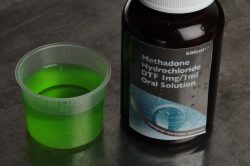An opioid agonist is a drug that interacts with opioid receptors producing effects that are similar to morphine. A full opioid agonist is able to activate the opioid receptors completely to elicit all associated opioid effects. Morphine itself is a full opioid agonist most closely resembling natural endorphins our brains use to make us feel better.
Opioid Agonist Treatment Uses
In the treatment of substance abuse, an opioid agonist commonly refers to methadone which is a synthetic opioid with full opioid agonist properties and the only full opioid agonist approved for opioid addiction treatments in the United States. Methadone is also used to manage severe and chronic pain because it is long-lasting.
Partial opioid agonists such as buprenorphine activate opioid receptors to a lesser extent. Buprenorphine products have been used in the treatment of opioid addictions since 2002..
How Does an Opioid Agonist Work?

Opioid agonists commonly refer to Methadone as a treatment for substance abuse.
When an opioid agonist enters the brain its chemical structure fits into the opioid receptors like a key into a lock. Once attached, the receptors are activated to release chemical neurotransmitters, specifically dopamine, to communicate messages of pain relief, euphoria, etc. Opioid agonists continue to elicit these effects until the drugs physically detach from the receptors as they are metabolized and the firing signals of neurotransmission diminish.
For opioid drugs like morphine and heroin, these effects usually only last a few hours depending on tolerance levels, biological factors, and the metabolizing rates of the users. For methadone and buprenorphine, however, the affects are much longer. These opioid agonists have a higher affinity (more staying power) within the proteins of the opioid receptors, act more slowly to reduce any over-stimulation of the receptors at appropriate doses, and are able to block other opioids from attaching to the receptors once cross tolerance is achieved.
Understanding the Use of an Opioid Agonist
An opioid agonist can be used to reduce cravings and withdrawals from short-acting opioids and deter their abuse by blocking their effects. This is extremely helpful for those wishing to detox from short-acting opioids where the use is a vicious cycle of intoxication and withdrawals, often several times a day.
Both methadone and buprenorphine only need to be taken once a day in most cases, so the person can focus on more important activities and raise their quality of life. Because methadone is able to be stored in the liver and at optimal doses, produces the relief these people need without the euphoria and other unwanted side effects.
According to the SAMHSA, buprenorphine has a “slow dissociation from the mu receptor” and this a primary reason for its long term effects. Buprenorphine products are often combined with small amounts of naloxone which is an opioid antagonist. If the person attempts to inject the medication, the naloxone kicks in reversing the agonist effects. Buprenorphine is also known for its “ceiling effect” which only activates opiates to a certain degree making higher dosage abuse unfeasible to the user.








